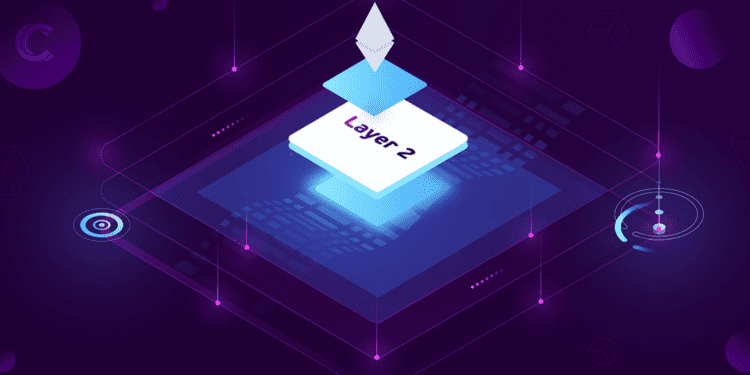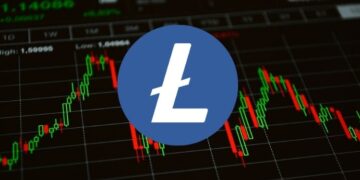Maximizing the Potential of Blockchain – Exploring the Potential of Layer 2 Solutions in Crypto & NFTs
Blockchain technology has been making waves in finance and technology for quite some time. One of the critical components of blockchain technology is the concept of layer one and layer two networks. A network is a decentralized ledger system that records transactions across a distributed network of nodes.
Layer 1 network, also known as the leading network or “mainnet,” is the underlying infrastructure of a blockchain. It is the base layer that defines the core rules of the ecosystem and is responsible for validating and finalizing transactions. Examples of Layer 1 networks include Bitcoin, Ethereum, and Solana.
Blockchain Trilemma
The challenge of building a blockchain network is that it must balance the three core properties:
- Decentralization
- Security
- Scalability
The blockchain trilemma states that it is impossible to achieve all three at once, and a simple blockchain architecture can only achieve two out of these three. So, if a blockchain wants to be secure and decentralized, it must sacrifice scalability.
Layer 1 blockchains usually emphasize decentralization and security, which is the core of a robust network. The goal of scalability is to increase transaction speed and throughput without sacrificing decentralization or security. As Ethereum has reached its capacity with over 1 million daily transactions, gas prices have risen, leading to the increased demand for scaling solutions. This is where Layer 2 networks come into play.
Enter Layer 2
Layer 2 refers to a secondary framework or protocol built on top of an existing blockchain system, a network built on top of the base network. The main aim of these protocols is to solve the transaction speed and scaling difficulties significant cryptocurrency networks face. Layer 2 protocols create a secondary framework where blockchain transactions and processes can take place independently of the Layer 1 network, also known as “off-chain” scaling solutions.
One of the key benefits of using off-chain solutions is that the leading network doesn’t need to undergo any structural changes as the second layer is added as an extra layer. Layer 2 solutions take the transactional burden away from Layer 1, making the base layer less congested and more scalable. In the case of Ethereum, a Layer 2 network regularly communicates with the Layer 1 network by submitting bundles of transactions to ensure similar security and decentralization guarantees.
Layer 1 networks handle security, data availability, and decentralization, while Layer 2 networks operate scaling related to transactions. Adding Layer 2 solutions to a Layer 1 network offers a way to solve the transaction speed and scaling difficulties without sacrificing network security. The most popular Layer 2 solutions are Polygon, Arbitrum, Optimism, and Immutable X.
Polygon
Polygon is a rising star in the world of blockchain technology. As a layer two scaling solution for the Ethereum network, Polygon is creating a standard for how decentralized applications (dApps) can operate and scale.
One of the significant issues with Ethereum is its need for scalability, with high fees and slow transaction times slowing down the ecosystem’s growth. Polygon addresses these issues by creating a faster separate chain with a higher Transactions Per Second (TPS) rate and lower fees per transaction.
Polygon can achieve this through its Proof-of-Stake (PoS) blockchain and Commit Chain connectivity. The well-supported PoS structure by the network makes Polygon many times cheaper to use.
In addition to its scaling solutions, Polygon has become a platform for developers and companies to access a suite of tools compatible with Ethereum. Polygon sets the standard for a layer two scaling solution with its compatibility and unique architecture.
Arbitrum
Arbitrum is a promising new solution for the growing pains of the Ethereum network. Utilizing a layer two scaling approach, it aims to relieve the congested leading network and reduce the cost of transactions.
Arbitrum uses the “Optimistic Rollup” technique that assumes all new transactions are good unless someone disputes them within a week. The transactions are processed faster because each app has trusted people checking it instead of one group checking everything. This approach allows for faster and more efficient processing of transactions, as it helps reduce congestion and cost by moving some work and data storage away from the leading Ethereum network.
Four key players in the Arbitrum ecosystem help make the process more efficient and quicker. These include:
- Verifiers
- A virtual machine (VM)
- A key
- A manager
With its potential for cost savings and increased efficiency, Arbitrum has dominated the industry as one of the top layer two solutions.
Optimism
Optimism is a new and improved way for people to use Ethereum. Developed by Ethereum developers for Ethereum developers, it represents a leap forward in terms of speed, stability, and scalability. This layer two blockchains are fully integrated with Ethereum’s Virtual Machine (VM), meaning that all Ethereum apps and tooling will work seamlessly on Optimism.
The platform’s name comes from the ‘Optimistic Rollup’ architecture that leverages the security of the Ethereum blockchain and offers incredible scalability at a fraction of the cost. It is a sustainable ecosystem fueled by protocol revenue and protected by single-round fraud proofs executed on layer 1. The seamless communication between Optimism and Ethereum and the platform’s ability to transfer assets between the two networks make Optimism a game-changer. In other words, Optimism is the Ethereum experience at ten times the speed.
Immutable X
Immutable X is a revolutionary platform set to change the NFT landscape as we know it. This layer two protocol is specifically designed to trade Ethereum NFTs, supporting ERC-721 and ERC-20 tokens. It aims to make minting and trading NFTs easier and more accessible than ever. Immutable X is leading the way in the sustainable and efficient trading of NFTs by introducing:
- Instant lightening fast-trades
- Zero gas fees
- Massive scalability
- Carbon-neutral minting and trading
The platform is limited to Ethereum NFTs and features its marketplace showcasing popular NFT projects like Gods Unchained and Guild of Guardians. This is a game-changer for the NFT industry, paving the way for a more sustainable future as this space matures.
Layer 2 for NFTs
NFTs can represent many things, including digital art, collectibles, and more. The NFT market is quickly becoming a new space for people to express their creativity, trade value, and build communities. The popularity of NFTs has been snowballing, leading to high demand for NFT transactions on the Ethereum network, the most commonly used blockchain for NFT transactions. With the increasing number of transactions, the Ethereum network has become congested, causing slow transactions and high gas fees.
Layer 2 offers a potential solution to these challenges that is fast, secure, and scalable. The solution allows NFT applications to scale by offloading their transactions to the Ethereum network (i.e., layer 1) while maintaining its decentralization, usability, and integrity. Doing so, they increase the speed and efficiency of NFT transactions while reducing the network’s energy consumption and carbon emissions.
The process of NFT layer two transactions is relatively simple:
- A transaction is executed outside of layer 1, saving on gas fees.
- Layer 1 holds the data and proof of the transaction, ensuring security.
- The Mainnet data can be used to enforce correct transactions at layer 2.
NFT projects planned and built for several years in the future are considering layer two scaling networks. Another venue that NFT projects have recently explored is the concept of moving to a multi-chain solution.
Major NFT projects such as Doodles, CoolCats, and Yoots have recently announced that they are going multi-chain to grow their brand and community. This would allow the NFT holders of these projects to take their digital assets with them wherever they go on the blockchain. This also ensures that communities, decentralized apps (dapps), and games will not be limited to a single blockchain. With whatever future utility these projects plan, opening doors to other networks would help them eliminate any limitations on the project in terms of relying on one network and its capabilities.
In conclusion, Layer 2 solutions have become increasingly popular in the crypto industry and NFT space, offering a promising alternative to the limitations of the traditional blockchain infrastructure. These solutions bring many benefits, such as improved scalability, faster transaction speeds, and lower fees, making them a compelling option for crypto and NFTs. While still in its early stages, Layer 2 is set to bring us one step closer to a future where blockchain technology can truly be integrated into our daily lives.















